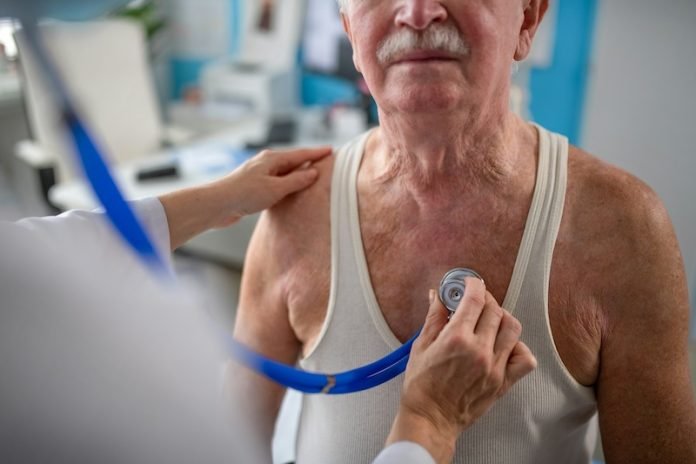
When we think about a heart attack, high drama and sudden, intense chest pain often come to mind, thanks to how they’re portrayed in movies and TV.
However, the real-life signals of a heart attack can be more varied and complex, particularly regarding what happens to blood pressure during the event.
Understanding these nuances can provide critical insights into one of the leading causes of death worldwide and help us recognize the signs early.
A heart attack, medically known as a myocardial infarction, occurs when blood flow to part of the heart is blocked for a long enough time that part of the heart muscle is damaged or dies.
This blockage is most often a result of coronary artery disease, where the arteries that supply blood to the heart muscle become narrowed due to a buildup of plaques.
But what happens to your blood pressure during a heart attack?
The answer isn’t straightforward because it can vary depending on several factors, including the severity of the attack, the part of the heart affected, and an individual’s overall health, including their baseline blood pressure.
Conventional wisdom might suggest that blood pressure skyrockets during a heart attack due to stress and pain. While this can be true, it’s not always the case.
Some people experience a rise in blood pressure during a heart attack because their body is reacting to stress and pain by releasing adrenaline, a hormone that increases your heart rate and blood pressure.
However, it’s also possible for blood pressure to drop during a heart attack. This can happen if the heart is not pumping as effectively as it should be, leading to decreased blood flow throughout the body, including to vital organs.
The symptoms of a heart attack can be varied and may include chest pain or discomfort, which is often described as pressure, squeezing, fullness, or pain in the center of the chest that lasts for more than a few minutes.
Other symptoms might include shortness of breath, nausea, lightheadedness, or discomfort in other areas of the upper body, such as one or both arms, the back, neck, jaw, or stomach.
However, it’s important to note that not everyone who has a heart attack experiences chest pain; this is particularly true for women, who are more likely to experience non-chest pain symptoms.
The relationship between heart attacks and blood pressure underscores the complexity of the human body’s response to heart disease.
It highlights why monitoring blood pressure and understanding its patterns can be an essential part of heart health.
High blood pressure, or hypertension, is a significant risk factor for developing coronary artery disease and, subsequently, heart attacks. Keeping blood pressure within a healthy range can reduce the risk of blockages forming in the arteries.
In conclusion, the interplay between blood pressure and heart attacks is complex and can manifest differently in individuals.
Whether blood pressure rises or falls during a heart attack can depend on many factors, making it crucial to be aware of all the potential symptoms of a heart attack, not just changes in blood pressure.
Recognizing these signs early and seeking prompt medical attention can save lives. It’s also a reminder of the importance of regular health check-ups and blood pressure monitoring as part of overall heart health management.
Keeping an eye on your heart through lifestyle choices and medical care can help navigate the tense relationship between heart attacks and blood pressure.
If you care about high blood pressure, please read studies that early time-restricted eating could help improve blood pressure, and natural coconut sugar could help reduce blood pressure and artery stiffness.
If you care about heart health, please read studies that vitamin K helps cut heart disease risk by a third, and a year of exercise reversed worrisome heart failure.
Copyright © 2024 Knowridge Science Report. All rights reserved.



